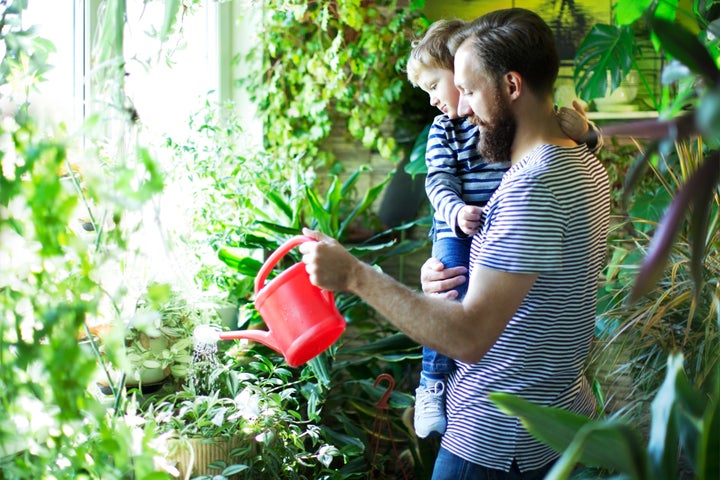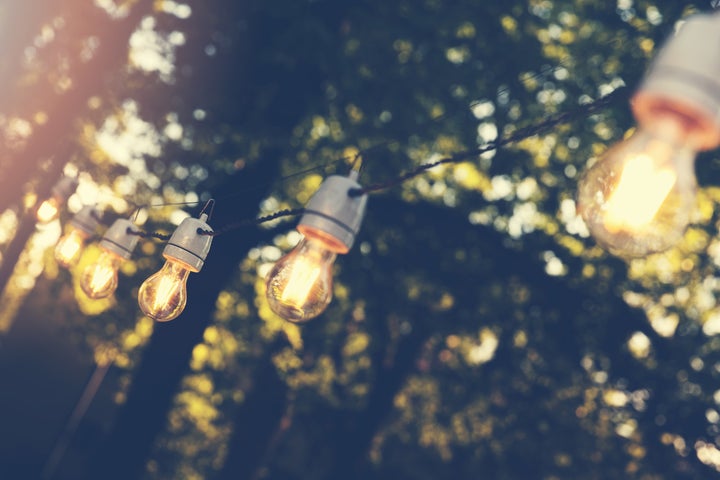We’d all like to start from scratch and build a Grand Designs-inspired eco palace complete with reclaimed furniture made from sustainable materials.
We’re all also aware that this may be something of a pipe dream. But, fear not – because a more eco home doesn’t need to involve a full renovation. We know to dial down the thermostat, wash the laundry at 30 degrees and to switch our appliances off standby – but there’s some other steps you can take, to radically alter your place’s carbon emissions.
Try these ideas to create a more environmentally-friendly household.

Create an urban forest
Architect Stefano Boeri doesn’t think that green spaces should be reserved for the moneyed. He also knows that air purifying plants help to mitigate the effects of pollution on our bodies, by absorbing carbon dioxide. So, he’s proposing a social housing block in Eindhoven, in The Netherlands, that doubles up as a vertical, urban forest.
Mimic this idea with crates of air purifying plants (such as golden pothos and mother-in-law’s tongue) on your window sills – making sure that more tropical plants are always safely insulated inside the house.

Get motion-detecting lights
Because you’re inevitably going to forget, sometimes. Installing lights that sense when someone is or isn’t in the room and switch on and off accordingly mean that you’re never going to run through excess energy for no reason. Ikea’s Tradfri range stars at £25.
Harvest rainwater
We know that water waste is bad. And, when it comes to stuff like watering your plants, looking after your garden and getting mud off your trainers, you don’t need the stuff from the tap – rainwater will do the trick.
Use the Rainharvest app to calculate how much rainwater your place could gather over a set period of time, and plan out your water savings accordingly. So long as your roof has gutters and a drainpipe, it can be used to collect water – there’s some great further guidance here.
Side note: another way to save water is to insert a cistern displacement device into your loo, if it was fitted before 2001. Older models have less efficient flushing systems and these devices can prevent as much water from going down the plug hole, by storing excess into crystals, ready to be released next time.

Keep your freezer full
Empty freezer draws are energy vampires. Because it takes more effort to freeze the air that’s circulating around than bags of peas, either ensure your fridge is always bulked out with things like ice, or break down cardboard boxes and use them to fill in gaps.
Use LED light bulbs
Energy inefficient halogen bulbs have been being phased out for a while, but a ban on their sale is set to come into effect from the first of September this year. So make sure that your lights are good to go.
LEDs are more eco and cheaper to run than traditional types. According to carbonfootprint.com, if every home in the UK changed three bulbs to LED versions away from traditional types, we’d save enough energy to light the UK’s street lamps. Plus, it’s less wasteful – an LED will last you for around 25,000 hours of use, as opposed to 2,000 for a halogen.

Get cavity wall installation
An eco home is an energy efficient home. And you might be already reducing how much central heating you’re using by turning the temperature down, or getting a new boiler installed. But a hidden drain on energy is cavity walls, which started to appear in homes built after the early 1930s.
These are walls that have been built out of two thicknesses of brick, meaning there’s a space in-between and that heat can be lost from your home. The good news is, E.ON are offering free cavity wall insulations if you book in your survey by 11 August 2018* – even if E.ON isn’t your energy supplier. As well as making your home warmer in the winter and cooler in the summer, it means you could save an average up to £145 a year on energy bills if you live in a semi-detached home, according to the Energy Saving Trust. Find out more information here.
Draught-proof your house
Lofts, doors, chimneys – there’s a lot of spaces that heat can run away from your home, without you knowing. Insulating your loft could stop warmth escaping via your roof, while getting draught proofing installed around your doors and adding an insulating layer of fibreboard underlay or polyfoam board underneath your carpet can make your house a lot more energy efficient.
Invest a few days of your time and be guaranteed a place in eco-friendly heaven.

Check for a leaky loo
It’s not always obvious if your loo is surreptitiously releasing water. But, according to Thames Water, a leaky loo can cost up to 400 litres of water a day (considering that you personally use an average of 140, this is not a small deal).
A Leaky Loo strip costs between £1-2 and can let you know – just stick one on pan last thing at night, and, if it changes colour by the morning, it’s time to get the plumbers in.
*You will need to book your free cavity wall insulation home survey under the Carbon Emission Reduction Obligation (CERO) scheme by 6pm on Saturday 11th August 2018 to ensure you receive free funding for cavity wall insulation installation through the CERO scheme.
Discover more about how E.ON could help you live a more energy efficient and sustainable lifestyle, here.